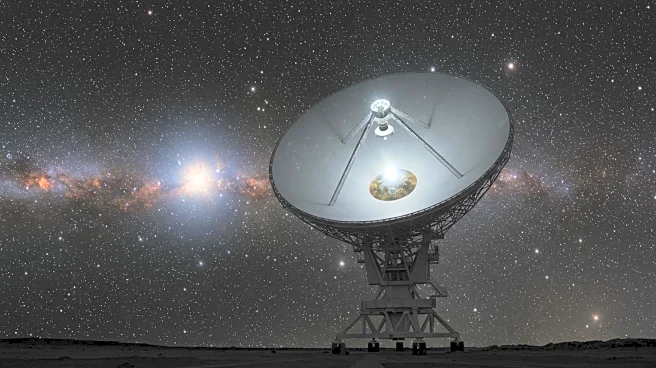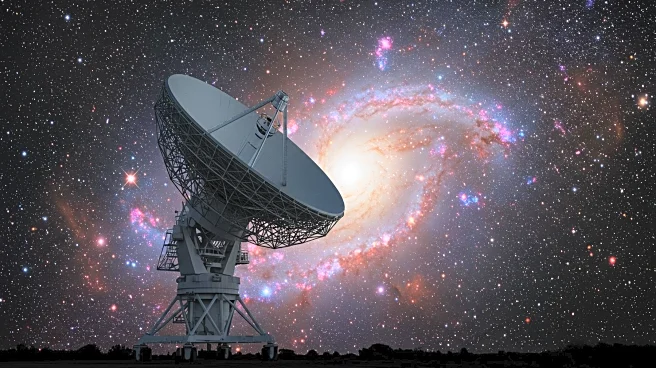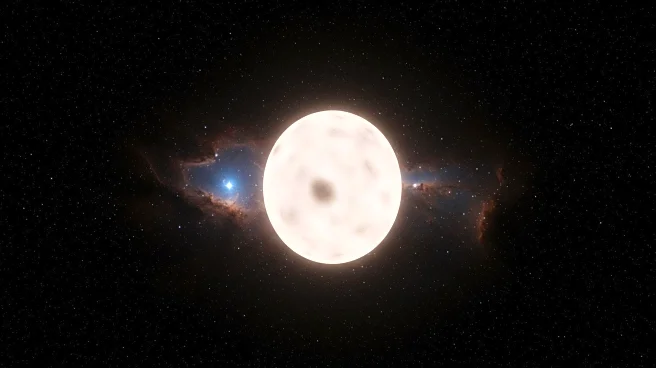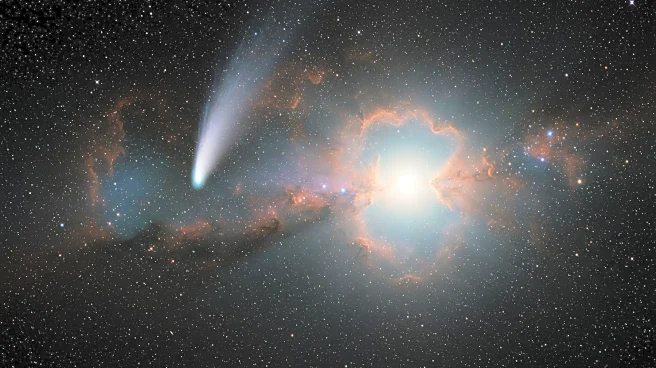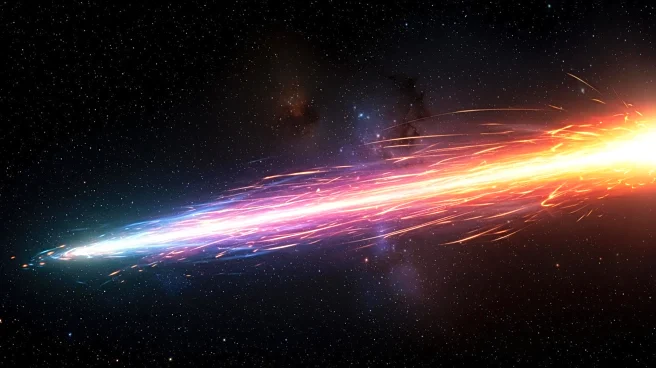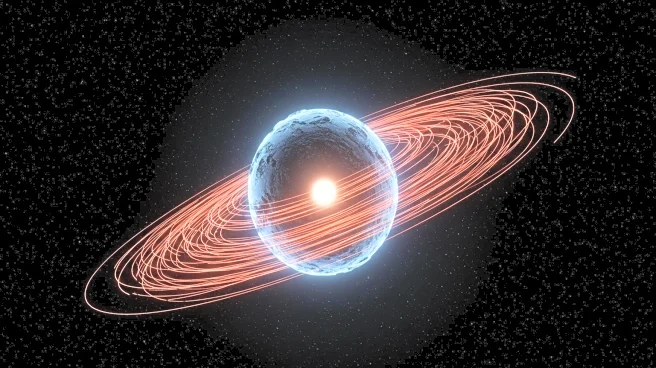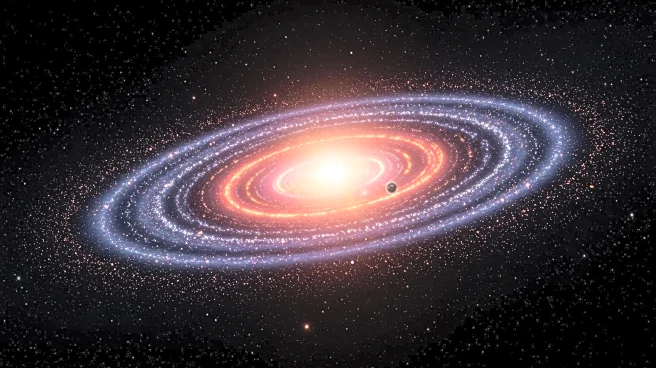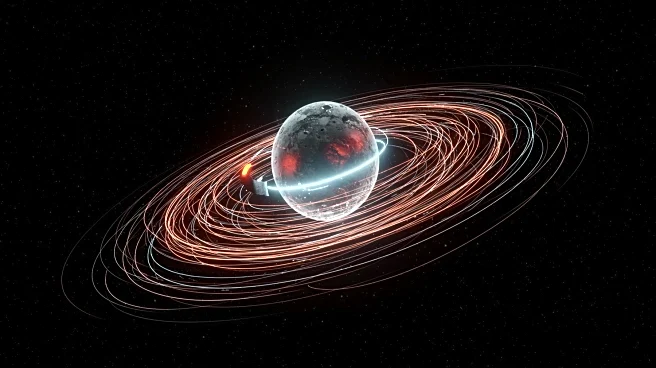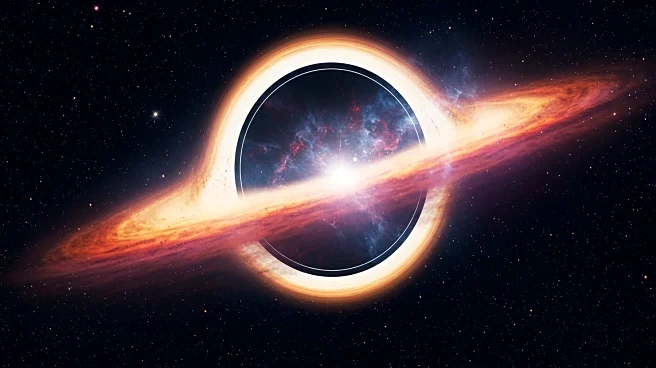What's Happening?
A team of radio astronomers led by Elena Shablovinskaya has discovered a peculiar bright object in the nearby galaxy NGC 4945, located about 11 million light years away. Using the Atacama Large Millimeter/submillimeter Array (ALMA) in Chile, the astronomers identified a bright dot, termed 'Punctum,' which outshines its surroundings, including the galaxy's central black hole. Punctum is significantly brighter than typical magnetars, microquasars, and most supernovae, with only the Crab Nebula surpassing it in brightness. The object remained visible in millimeter wavelengths two weeks after initial observations, suggesting it is not a transient phenomenon.
Why It's Important?
The discovery of Punctum challenges existing astronomical knowledge and highlights the potential for new cosmic phenomena. Its brightness and persistence suggest it may represent a new type of celestial object, prompting further investigation into its nature and origins. Understanding Punctum could provide insights into the magnetic environments and energy sources of extreme cosmic objects. This discovery emphasizes the importance of continued exploration and observation in astronomy, revealing the universe's capacity to surprise and expand scientific understanding.
What's Next?
Further research is planned to investigate Punctum's polarization, which may reveal details about its magnetic environment. The team aims to measure its magnetic field across different wavelengths and observe changes over time to understand its power source and potential links to known astrophysical objects. This ongoing study could lead to breakthroughs in identifying and categorizing new cosmic phenomena, contributing to the broader field of astrophysics.
